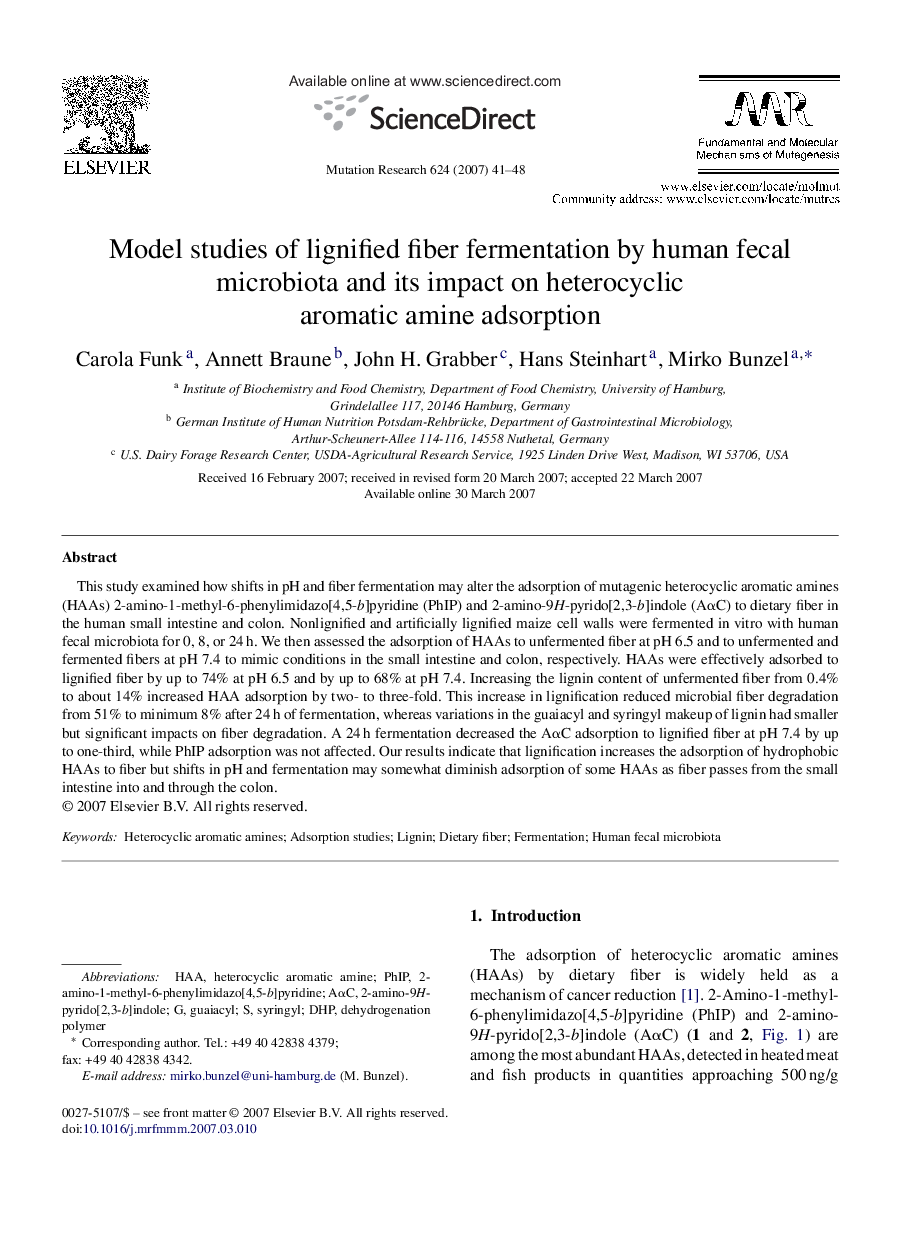| Article ID | Journal | Published Year | Pages | File Type |
|---|---|---|---|---|
| 2147320 | Mutation Research/Fundamental and Molecular Mechanisms of Mutagenesis | 2007 | 8 Pages |
This study examined how shifts in pH and fiber fermentation may alter the adsorption of mutagenic heterocyclic aromatic amines (HAAs) 2-amino-1-methyl-6-phenylimidazo[4,5-b]pyridine (PhIP) and 2-amino-9H-pyrido[2,3-b]indole (AαC) to dietary fiber in the human small intestine and colon. Nonlignified and artificially lignified maize cell walls were fermented in vitro with human fecal microbiota for 0, 8, or 24 h. We then assessed the adsorption of HAAs to unfermented fiber at pH 6.5 and to unfermented and fermented fibers at pH 7.4 to mimic conditions in the small intestine and colon, respectively. HAAs were effectively adsorbed to lignified fiber by up to 74% at pH 6.5 and by up to 68% at pH 7.4. Increasing the lignin content of unfermented fiber from 0.4% to about 14% increased HAA adsorption by two- to three-fold. This increase in lignification reduced microbial fiber degradation from 51% to minimum 8% after 24 h of fermentation, whereas variations in the guaiacyl and syringyl makeup of lignin had smaller but significant impacts on fiber degradation. A 24 h fermentation decreased the AαC adsorption to lignified fiber at pH 7.4 by up to one-third, while PhIP adsorption was not affected. Our results indicate that lignification increases the adsorption of hydrophobic HAAs to fiber but shifts in pH and fermentation may somewhat diminish adsorption of some HAAs as fiber passes from the small intestine into and through the colon.
